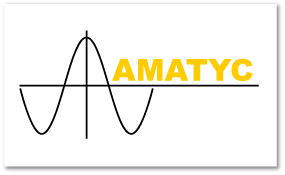Fullerton College AMATYC Student Math League
| Test Info | Previous Exams | Past Champions | Latest Results |

Fullerton College has been participating for many years and we pride ourselves on being one of the top teams in the nation each year. Our success comes from having a large group of our talented math students participate in each round.
Anyone who is a Fullerton College student and has not yet earned a two-year or four-year degree is eligible to participate. You don't need to sign up and it doesn't cost anything. This really is a great opportunity to see how you measure up against other math students in the nation with no real down side.
Round One
Check back on this site in September of 2021 for information about the 2021-22 contest.
Fullerton College's SML Team History
Here at Fullerton College, we are proud of being one of the top colleges in the nation competing in the Student Math League. In recent years we have had 2 top-10 finishes, out of almost 200 schools participating. In 2010-2011 we ranked 7th in the nation and in 2011-2012 we ranked 6th.
Individually we have had two national champions and a top female in the nation. In 2016-2017 Seung Jo (Stephen) Yoo was national champion, in 2005-2006 Charley Conely was the national champion and in 2010-2011, Colleen Nelson was the top female in the nation. For a list of all of Fullerton College's top scorers, see our Past Champions page.
For a complete list of national SML results dating back to 2001, click here.
Scoring
Winners will be determined by a combined score from rounds one and two. Each question is worth 2 points and there is a 1/2 point penalty for wrong answers.
Benefits
Aside from the chance to win scholarship money or other awards described below, taking this challenging, standardized test can be a valuable experience in preparation for exams that may be required later in your education. Taking this test now might help you later if you decide to take the GRE, the MSAT, the LSAT or other qualifying exams.
Test Format
The level of the tests is precalculus mathematics. Questions are from a standard syllabus in College Algebra and Trigonometry and may involve precalculus algebra, trigonometry, synthetic and analytic geometry, and probability; questions that are completely self-contained may be included as well. All questions are short-answer or multiple-choice (multiple-choice questions will have at least 4 response choices). No partial credit is allowed in scoring.
Calculators
Students are permitted to use any scientific or graphics calculator that does not have a QWERTY (i.e. typewriter) keyboard.
Reference
No books, tables, notes, or other reference material will be permitted during the exam. Scratch paper will be supplied at the time of the exam.
Awards
The top three combined scores at Fullerton College will receive scholarship money along with a certificate. The exact
amount varies from year to year. In previous years it has been as much as $325. In addition, the grand prize for the
qualified individual with the highest total score in the nation on the two exams is $3,000. The top ten national ranking
individuals will receive appropriate prizes of a mathematical nature. To be eligible for a national award, a participant
must compete on both exams.
Eligibility for the Grand Prize
In addition to meeting general eligibility requirements, a student must have successfully completed a minimum of 12
semester hours (or equivalent quarter hours) of community college (two-year college) coursework by the end of the academic
term in which the second exam is given. Students enrolled in a four-year institution or in high school at the time of the
competition are NOT eligible for the grand prize, nor are previous recipients of the grand prize. Official transcripts
and a letter signed by the student and local moderator certifying eligibility will be required in order to award the prize.
The scholarship must be used within two years of its award at the conference; if it is not, two scholarships will be awarded
in the next year's competition.
What to Expect
You will have one hour to complete 20 questions. In general, students are not expected to be able to answer all of the
questions. For multiple-choice questions, there is a penalty for incorrect responses. Correct responses are worth 2 points
and 1/2 point is subtracted for each incorrect response.Unless you can eliminate one or more choices, you should not
attempt to guess the answer.
Preparation
The best way to prepare for the exam is to study previous exams. You can obtain copies of previous exams along with the solutions, here, or pick them up from Paul Sjoberg in his office, 627-04.
